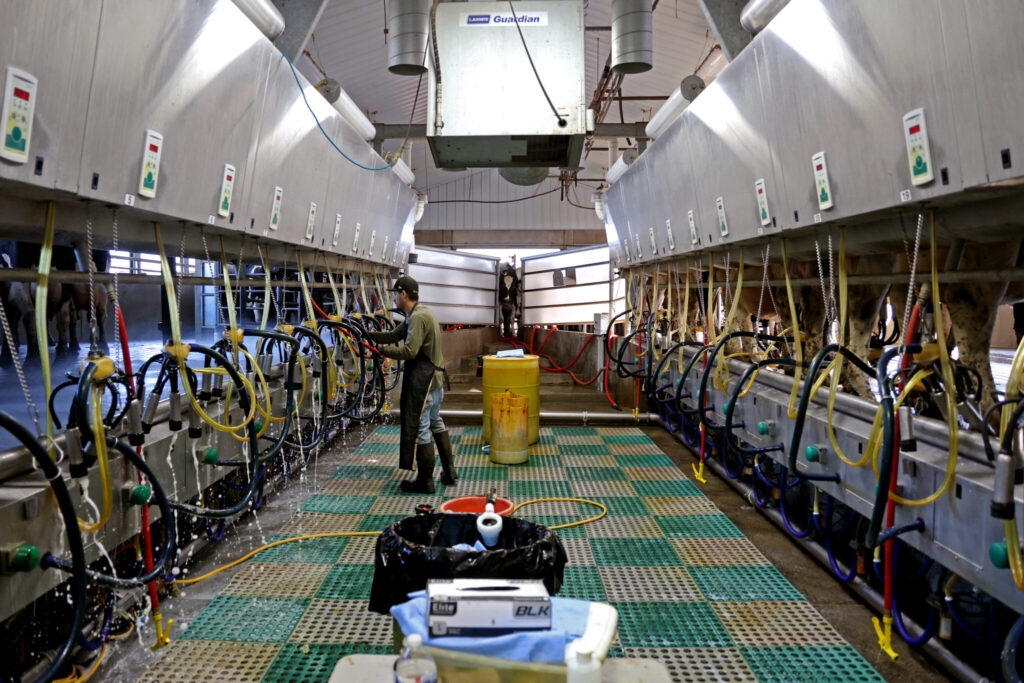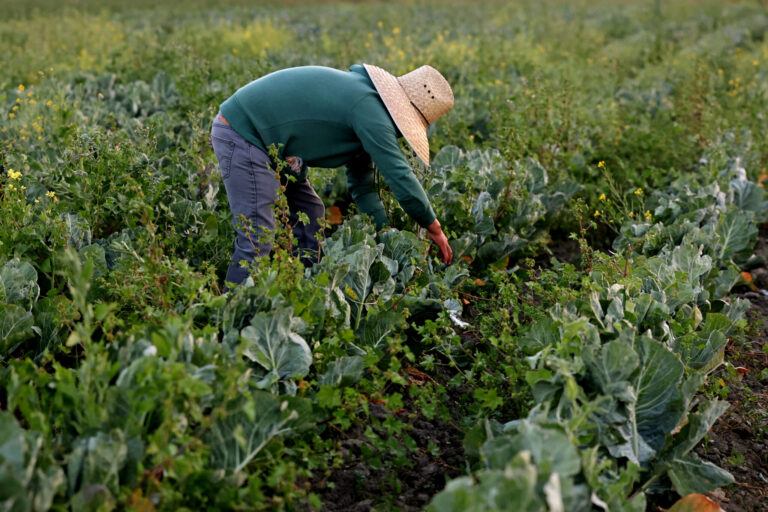U.S. Farmers on The Ropes-Fight for Survival Thickens

A combine harvests a field of soybeans and unloads the crop into a grain wagon. Credit-NBC
Farmers all over the country are not ok and most are on the cusp of giving up. Already, farm bankruptcies as of July exceed those over the full year of 2024.
A lot of forces have buffeted American agriculture. Low commodity prices, a persistent issue for years, now come with higher costs for inputs like fertilizer and equipment. Climate change has led to deeper, longer droughts and more flooding.
The ongoing trade wars aren’t helping either. Tariffs on other countries’ exports to the U.S. make those products more expensive to import. There’s a 10% U.S. tariff on Canadian potash, a kind of fertilizer. That’s down from the broader 25% tariff President Donald Trump imposed on some other Canadian goods, but it’s still costly.
Retaliations from some countries are hitting farmers directly. China, once the main customer for U.S. soybeans, has been boycotting them. Moreover, Beijing’s retaliatory tariffs make U.S. soybeans 20% pricier than their South American competitors, according to the American Soybean Association.
“U.S. soybean farmers are standing at a trade and financial precipice,” ASA President Caleb Ragland, a soybean farmer from Kentucky, warned in an Aug. 19 letter to the White House. “Prices continue to drop, and at the same time our farmers are paying significantly more for inputs and equipment. U.S. soybean farmers cannot survive a prolonged trade dispute with our largest customer.”
That’s an issue to watch as senior American and Chinese officials come together in Madrid soon for a fourth round of talks on issues like tariffs and TikTok.
Some farmers fear “catastrophic” labor shortages due to Trump administration crackdowns on foreign workers.
Earlier this year, the president himself acknowledged the strain ICE raids have put on American agriculture and tourism, while claiming without evidence that “criminals … are applying for those jobs.” (The Agriculture Department has estimated that 42% of hired crop farmworkers were not legally allowed to work in the U.S. as of 2022.)
In Trump 1.0’s trade war, farmers got billions of dollars in federal emergency aid. That appears to be the approach this time around, too (though some question whether the assistance will get to the right farms).
It’s conceivable that the upcoming Madrid talks could yield some kind of breakthrough that will benefit farmers.
But time may be running short. As storage facilities fill up, pressure increases on farmers to lower prices in order to sell, compounding the problem.
Americans have probably noticed grocery prices ticking upwards this year. U.S. tariffs on food products from abroad will fuel more of that
But there’s also the impact on the larger economy.
Agriculture, food and related industries contributed about $1.5 trillion to the economy in 2023, roughly 5.5% of the gross domestic product, according to the Department of Agriculture.

A worker cleans the dairy parlor before cows come in to be milked at a dairy Farm. Without a consistent workforce to oversee milking operations, farmers say cows, and the entire operation, will suffer. Credit-VOA
It’s clearly a jobs powerhouse. On-farm employment comprised 2.6 million jobs in 2022, the last time a nationwide farm census was conducted. But when one factors in the downstream impact – all of the agricultural and food-related sectors – that figure jumps to 22.1 million full- and part-time jobs, or 10.4% of total U.S. employment, USDA reported.
The clock is ticking for farmers though.
President Donald Trump’s “Big, Beautiful Bill” promises expanded agricultural subsidies — but not until 2026, according to the House Committee on Ways and Means. For farmers staring down loan payments this spring, that’s a lifetime away. Farmers have to make ad hoc payments right now just to make it through this year.
This isn’t just a rural crisis. When farms across the country start collapsing, especially family run farms, the effects ripple through the economy.
In the short term, fewer planted acres mean reduced crop production, which pushes up the cost of raw materials almost immediately. Within months, food manufacturers pass those higher costs along the supply chain, leaving consumers to pay more at the grocery store. And in the long run, as family farms shut down, larger corporations step in to fill the gap — reducing competition and keeping prices higher for good.

A farmworker harvests cauliflower on Saturday, June 14, 2025, in San Benito County, Calif. California farmers produce about 90% of the country’s cauliflower. (Photo by Meghan O’Brien/News21)
The farmers themselves are clear: they’re not asking for charity — they’re fighting for survival. Without emergency aid and urgent government intervention before spring planting season, American farmers could lose a third of their farms and we would have a full-blown crisis on our hands.
From Arkansas to Idaho to Vermont to Colorado to Ohio and other parts of the country, the cry from farmers is the same. If the farms go, we all pay the price.






